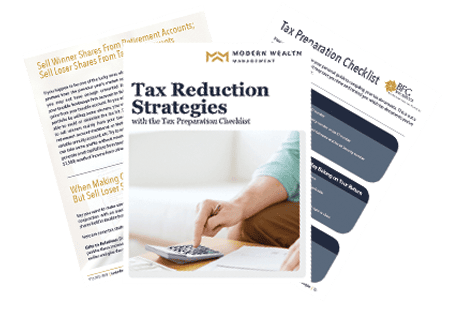Tax Planning Case Study
Key Points – Tax Planning Case Study
- A Tax Planning Case Study with Two Sample Couples
- Having a Tax Plan vs. Not Having a Tax Plan
- Tax Deferral vs. Tax Planning
- Working with a CFP® Professional and CPA Together
- 3 Minutes to Read
What a Difference Forward-Looking Tax Planning Can Make
From Roth conversions and Required Minimum Distributions to Qualified Charitable Distributions and donor-advised funds, there can be a lot to address for year-end tax planning. But remember that tax planning isn’t about trying to mitigate as much tax as possible in one year. That’s tax deferral. Tax planning is geared to help you pay as little as possible in taxes over your lifetime. We’re going to break down a tax planning case study to help you understand the impact that tax planning can make.
Unfortunately, a lot of people don’t know that there’s a difference between tax deferral and tax planning. In this tax planning case study, there are two married couples—Sam and Samantha and Paul and Polly. One of the couples has a tax plan and one doesn’t. Let’s learn a little bit about each couple and how tax planning can be beneficial in this case study.
Tax Planning Case Study Couple No. 1: Sam and Samantha
We’re going to kick off this tax planning case study with Sam and Samantha. They are 65 or older, are married filing jointly, and want to spend $120,000 net of taxes this year. However, they don’t have a tax plan. Instead, they stress out every year until they meet with their CPA to find out if and how much they owe the IRS when they file their yearly tax return.
Sam and Samantha have $20,000 in combined Social Security and $40,000 in RMDs. In order to fund their spending plan, Sam and Samantha will need to take $60,000 out of their tax-deferred accounts. Taking that $60,000 IRA distribution caused them to pay tax on 85% of their Social Security and moved them to the 22% tax bracket.
When Sam and Samantha file their tax return, they discover that their federal taxes are almost $15,000, which will also need to be funded by their IRA accounts. Therefore, Sam and Samantha need to distribute $75,000 from their tax-deferred accounts to cover their spending plan and taxes.
Tax Planning Case Study Couple No. 2: Paul and Polly
Now that we’ve seen Sam and Samantha’s situation in this tax planning case study, let’s shift gears to Paul and Polly. They are also 65 or older, are married filing jointly, and want to spend $120,000 net of taxes this year. Unlike Sam and Samantha, though, Paul and Polly meet annually with a tax planner. They have followed a forward-looking tax plan created by their CPA so that they know that every year, their tax bill will be the lowest number possible.
Paul and Polly have $40,000 in combined Social Security and $20,000 in RMDs. Due to their advanced tax planning, they have money in the three tax buckets—taxable, tax-deferred, and tax-free. When they met with their financial advisor and CPA to determine where to take their money, their CPA properly blended their withdrawal from a combination of their taxable account and their Roth IRA. These withdrawals result in $25,000 of net long-term capital gains.
Paul and Polly’s federal tax liability is only about $1,700 when they file their taxes. Remember, that Sam and Samantha’s tax bill was $15,000. Paul and Polly’s advanced tax planning allowed them to maximize their Social Security benefits as well as take steps to reduce their RMDs.
This is Only One Example
This is just one tax planning case study and one tax planning example. However, the question is simple…who doesn’t like to pay the lowest amount possible every year on their tax return? If you want to learn more about tax planning strategies that can lower your taxes over your lifetime, download our Tax Reduction Strategies guide below.

Tax Reduction Strategies Guide
Along with health care, taxes are one of the biggest wealth eroding factors in retirement. Building a forward-looking tax strategy is a pivotal wealth protection tactic. Do you want to be Sam and Samantha or Paul and Polly? If you want to save money with a forward-looking tax plan, start a conversation with us here.
Taxes Are a Big Piece of the Financial Planning Puzzle, But They Aren’t the Only Piece
A forward-looking tax plan is a crucial piece of your comprehensive financial plan. Our CFP® Professionals will work with you to build a plan that’s designed around your needs, wants, and wishes. But our CFP® Professionals aren’t the only professionals involved throughout the financial planning process. It’s important to have a CPA that works alongside your CFP® Professional to review your plan for tax planning opportunities like Paul and Polly did.
Our CFP® Professionals and CPAs are two of the three C’s on our financial planning team. The last of the C’s is our CPAs. And those three C’s are working together for the most important C—the client. In addition to the three C’s, estate planning and insurance professionals are key players on our team of financial professionals.
All these financial planning components are intertwined, especially when it comes to taxes. We’re ready to help you create a forward-looking tax plan as a part of your goals-based financial plan.
Investment advisory services offered through Modern Wealth Management, LLC, an SEC Registered Investment Adviser.
The views expressed represent the opinion of Modern Wealth Management an SEC Registered Investment Adviser. Information provided is for illustrative purposes only and does not constitute investment, tax, or legal advice. Modern Wealth Management does not accept any liability for the use of the information discussed. Consult with a qualified financial, legal, or tax professional prior to taking any action.